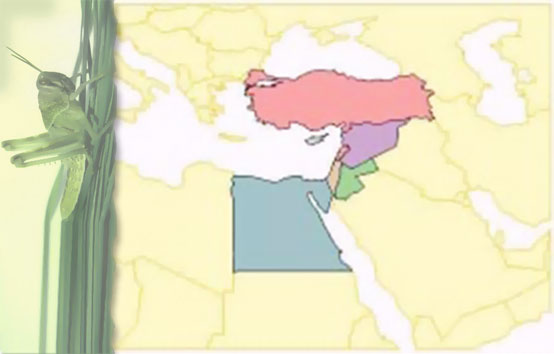Tegolophus hassani (Keifer)
Taxonomic placing: Acari, Prostigmata, Eriophyoidea, Eriophyidae.
Common name: Olive rust mite.
Geographic distribution: Mediterranean countries, Iran, Iraq, Ukraine.
Host plants: Olive.
Morphology: The mite is spindle-shaped, yellowish, about 0.18 mm in length, with a broad anterior lobe over the rostrum but without dorsal microtubercles. The featherclaw is four-rayed.
Economic importance: The feeding of this mite causes russeting and deformations on the leaves that reduce the quantity and quality of the olives.
LIfe cycle: In Egypt, a generation is completed in about 14 days at 31°C and 80% RH.
Management: A single application of abamectin in the spring controlled the mite in Egypt.
Biological control: In Egypt the phytoseiid Neoseiulus cydnodactylon (Shehata and Zaher) and the stigmaeid Agistemus olivi Romeih attacked T. Hassani.
References
Abou-Awad, B.A., Metwally, A.M. and Al-Azzazy, M.M. 2005. Environmental management and biological aspects of two eriophyid olive mites in Egypt: Aceria oleae and Tegolophus hassani. Journal of Plant Diseases and Protection 112: 287–303.
Pilanci, A., Denizhan, E. and Ozden, O. 2014. A new record of Tegolophus hassani (Keifer, 1959) (Acari: Prostigmata: Eriophyoidea) from Cyprus. International Journal of Acarology 40: 205-206.
Shahini, S., Kullaj, E., Cakalli, A. and De Lillo, E. 2009. Preliminary survey and population dynamics of some eriophid mites (Acari: Eriophyoidea) associated with olives in Albania. International Journal of Acarology 35: 419–423.
